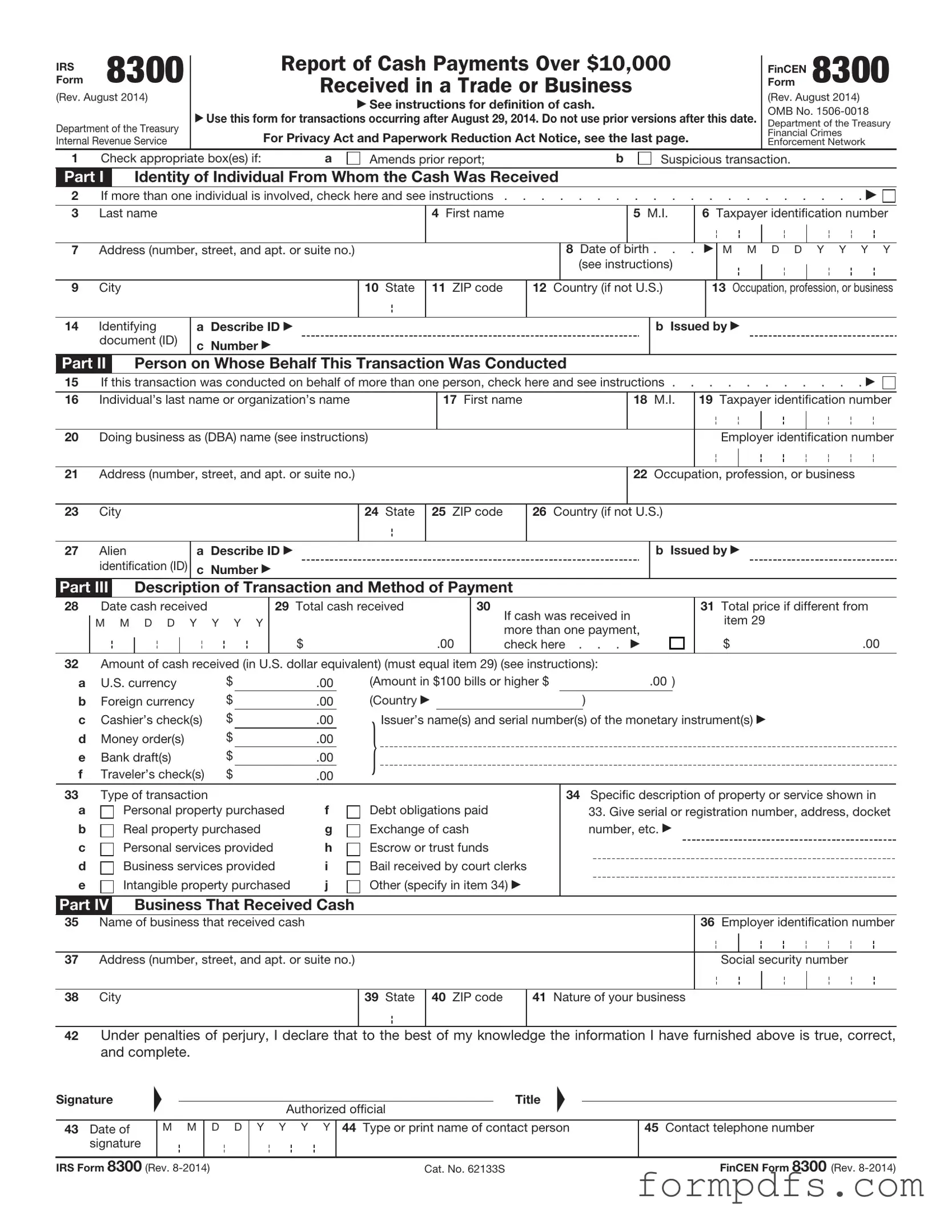What is the IRS 8300 form?
The IRS 8300 form is a document that businesses must file when they receive cash payments exceeding $10,000 in a single transaction or related transactions. This form helps the IRS track large cash transactions to prevent money laundering and tax evasion.
Who needs to file the IRS 8300 form?
Any business that receives cash payments over $10,000 must file the IRS 8300 form. This requirement applies to various types of businesses, including retail establishments, service providers, and any other entity that deals in cash transactions.
What constitutes a cash payment?
Cash payments include physical currency, such as coins and paper money, as well as certain negotiable instruments like cashier's checks, money orders, and traveler's checks. Payments made by credit card or debit card do not qualify as cash payments for this purpose.
When is the IRS 8300 form due?
The IRS 8300 form must be filed within 15 days of the transaction that triggers the reporting requirement. If the transaction occurs over multiple days and totals more than $10,000, the form should be filed within 15 days of the last cash payment.
How can the IRS 8300 form be submitted?
Businesses can submit the IRS 8300 form electronically through the IRS website or by mailing a paper form to the appropriate address provided by the IRS. Electronic filing is generally faster and can help reduce errors.
What are the penalties for not filing the IRS 8300 form?
Failure to file the IRS 8300 form can result in significant penalties. The IRS may impose fines for late filings, and the penalties can increase based on the duration of the delay. Additionally, failure to report could lead to further scrutiny or audits by the IRS.
Are there any exceptions to filing the IRS 8300 form?
Certain exceptions apply, such as transactions conducted by financial institutions or transactions involving foreign governments. However, most businesses that receive cash payments exceeding the threshold must file the form without exception.
What information is required on the IRS 8300 form?
The IRS 8300 form requires detailed information, including the name, address, and taxpayer identification number of the person making the cash payment. Additionally, businesses must provide their own information and details about the transaction, including the amount and date of the payment.
